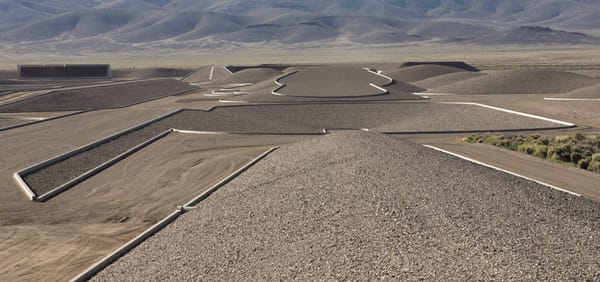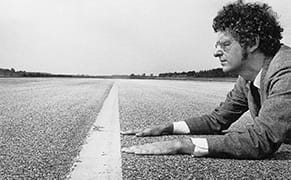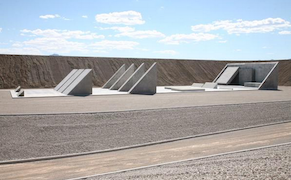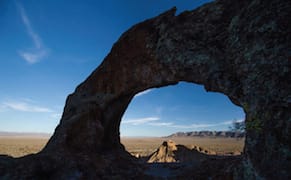
Opinion
Why We Never Visited Michael Heizer’s City
We counted down the minutes until we hit the stretch of highway closest to the installation, but we didn’t stop.

Opinion
We counted down the minutes until we hit the stretch of highway closest to the installation, but we didn’t stop.

Opinion
Despite his reportedly encyclopedic knowledge of the region’s geologic and mineral makeup, Heizer has displayed a baffling incuriousness about the larger story of the land he digs, cuts, and plows.

Art
Characterizations of the artist's newest work, and that of other White land artists of his generation, sometimes ignore questions of place and locality that are central to Indigenous thinking.

Art
Work on the colossal land art project in the remote Nevada desert began in 1970.

Interview
In his new documentary, Troublemakers: The Story of Land Art, filmmaker and art historian James Crump digs beneath the surface to explore the personal lives, artworks, and historical treatment of three land artists: Michael Heizer, Walter De Maria, and Robert Smithson.

In Brief
In March, the art world rallied to call for the protection of Nevada's Basin and Range area, a landscape of rich archaeological resources and the site of Michael Heizer's sprawling land art piece, "City" (1972–present).

Art
WENDOVER, UTAH — Land use has got to be one of the least sexy topics of conversation.

News
In 1972, the Land Art pioneer Michael Heizer began buying up tracts of land near Nevada's Garden and Coal valleys.

In Brief
A bill quietly introduced by United States Senator Harry Reid would protect an 800,000-acre swath of Nevada desert containing the land art works of Michael Heizer, the Las Vegas Review-Journal reported.

Opinion
Earlier today @museumnerd tweeted out a link to a view of Michael Heizer's land work "Double Negative" (1969) in Google Maps. Viewed in satellite, from high above, Heizer's 1,500-foot-long trenches looks almost incidental, like cuts made with scissors into the skin of the earth.

Art
The pervasive, even immersive, nature of sound is the subject of an unassuming exhibition by Tim Bruniges, whose megalithic installation, MIRRORS, is on view at Brooklyn's Signal gallery.

Art
Michael Heizer’s "Double Negative" (1969), located two hours northeast of Las Vegas, is a quintessential piece of the Land Art canon. Yet if you don’t have a clear image of what you’re looking for, you may not find it — this is no "Spiral Jetty."